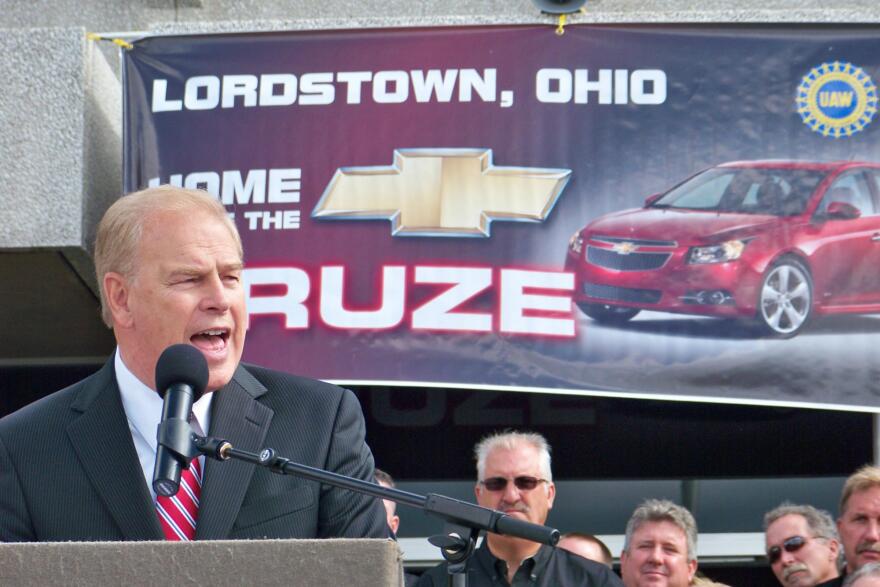A new report by the Brookings Institution shows signs of a slowdown in the auto industry that will likely resound throughout the manufacturing economy. And Northeast Ohio is identified as among the areas that will be hurt.
Mark Muro, a senior fellow at Brooking Institute, says after seven years of growth the auto industry is undeniably plateauing.
Car buyers have caught up with purchases they delayed during the recession. Low gas prices have hurt sales for cars like the Chevy Cruze, made in Lordstown. Auto manufacturers are focusing research dollars on driverless cars. And the auto industry always has been cyclical.
“This is routine,” Muro says, “but that doesn’t make it any more comfortable for places that rely on the enormous auto sector for good jobs at all different levels of training.”
Muro says a broader concern may be that the industry plays an outsized role in manufacturing overall. During the last 15-18 months, between 60 to 80 percent of job gains have been related to automotive.
“Because this sector has done well for nearly a decade, it maybe obscured slowness in the rest of manufacturing,” Muro says.
For all the talk about diversifying U.S. manufacturing, Muro says the auto industry is a bellwether.
“It’s not only important, it’s been in many respect the best game in town for employment in manufacturing,” he says.
According to Muro, the auto industry is in better shape than it was when the Great Recession hit. He insists he’s not pessimistic about its future.
“But it is a cyclical affair, and we are really relying on it heavily for manufacturing and employment,” Muro says.

Some metropolitan areas are safer than others. The Brookings research includes a map that shows trends up and down in employment in the sector.
Many of the dots that show signs of slowdown – like northeast Ohio – were also areas that went heavily for President Donald Trump in last year’s election.
“Trump spoke powerfully to current and displaced manufacturing workers,” Muro says. “And it happens that many, many manufacturing workers and displaced manufacturing workers have been associated with the auto industry. So it’s a geography that sweeps from the northern Midwest, down I-65 and into the south. And those places have inordinately benefited from a good decade and now are exposed.”
One problem, Muro says, is the expectation game.
“A lot of promises have been made that I’m afraid may be unsustainable,” he says.
Among those promises is a projection by President Trump’s budget director, Mick Mulvaney, for 3 percent grown in GDP. Muro says that’s unrealistic – and the nonpartisan Congressional Budget Office released a report that agreed.
“And meanwhile, there are bigger issues than just the cycle: Automation and productivity,” Muro says.
Part of the reason the auto industry is so productive these days, he says is that it’s supplanting more human labor “by using more robots than the past.”
Muro says the best hope to offset a softening of auto may be the chemical industry.
“Your region knows better than others that we have had a massive shale gas boom, which has produced a glut of natural gas,” he says.
That’s meant a plentiful and cheap raw material for chemical production.
“There have been a spate of bit announcements of investment of new chemical plants, plastic plants,” Muro says.
And there are side benefits, too. A resumption of oil and gas drilling would also bring increased demand for another Ohio legacy industry, steel pipe. But unlike President Trump’s focus on reviving steel, Muro does not expect that to reach the fever pitch of five years ago.




